
1969: Gigi Taramazzo in an Abarth 2000 at the Trento - Bondone hillclimb. Photo courtesy G. Tomazzoni
This week we present an exclusive story about the famous yet little known Scuderia Brescia Corse. Dino Brunori, author of “Nardi, A fast life”, has done a lot of research on the team from Brescia; this is the first of two parts. Ed.
This is a story of men, cars, races and a story of Brescia. Called ‘the lioness of Italy’ for its strong and fierce resistance to the Austro-Hungarian army before surrendering during the first war of independence in 1848, Brescia became the capital of car racing from the very beginning of the automobile.
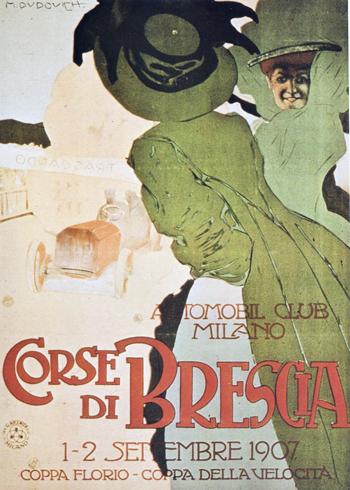 Brescia is not just the Mille Miglia; on September 14, 1899, it hosted one of the first road races in the world, on a circuit touching Brescia, Cremona, Mantova and Verona; on March 3, 1904, the ‘Coppa Florio’ road race held there by Vincenzo Florio, a precursor to the fabled Targa Florio; September 10, 1905 and September 2, 1907, were the dates of the ‘Brixia Week’ with races of cars, airplanes and boats on Lake Garda; and on September 1921, Brescia hosted the first Italian Gran Prix. The Mille Miglia was a latecomer, established in Brescia in 1927.
Brescia is not just the Mille Miglia; on September 14, 1899, it hosted one of the first road races in the world, on a circuit touching Brescia, Cremona, Mantova and Verona; on March 3, 1904, the ‘Coppa Florio’ road race held there by Vincenzo Florio, a precursor to the fabled Targa Florio; September 10, 1905 and September 2, 1907, were the dates of the ‘Brixia Week’ with races of cars, airplanes and boats on Lake Garda; and on September 1921, Brescia hosted the first Italian Gran Prix. The Mille Miglia was a latecomer, established in Brescia in 1927.
This story, however, begins with the ashes of the 1957 Mille Miglia; its demise left Brescia with no famous auto racing event. But there was fire smoldering in the ashes. With the 1960s came the young and rebels, miniskirts, fast cars, the incredible economic boom, all of which also affected Brescia. Car racing boomed as well; on any Sunday there was a hillclimb or a circuit race to be found somewhere.
A nice house at the bottom of a hill in Brescia was the home of Dr. Alfredo Belponer, a wealthy young heir of an industrial family that made its fortune manufacturing the machinery to produce hosiery. Dr. Belponer loved fast cars and quite soon he gathered a group of friends who shared the same passion. The next step was obvious, and common in those days: let’s form a club and find out how we’ll do as real racers. At this stage there was the need to give a name to the group and Alfredo decided to call it ‘Scuderia Brescia Corse’: Note the lack of motors, car, or racing in the name; just Brescia Races would be fine.
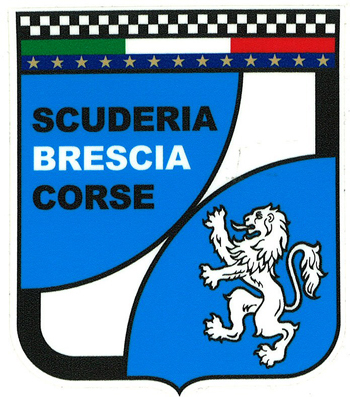 Because the rules required that a Scuderia needs (among the founders) at least one partner with interest in the car industry, on December 5, 1964 the Scuderia Brescia received a visit from an enthusiast from Torino. His name was Carlo Abarth and in signing the act of registration, brought a great name to the founders. The coat of arms of the Scuderia was a shield with white and pale blue colors and the prancing lioness, all emblems of the town. The first board of the Scuderia elected Belponer as President, and Ugo Gussalli Beretta, the heir of the Beretta firearms company, as Vice President.
Because the rules required that a Scuderia needs (among the founders) at least one partner with interest in the car industry, on December 5, 1964 the Scuderia Brescia received a visit from an enthusiast from Torino. His name was Carlo Abarth and in signing the act of registration, brought a great name to the founders. The coat of arms of the Scuderia was a shield with white and pale blue colors and the prancing lioness, all emblems of the town. The first board of the Scuderia elected Belponer as President, and Ugo Gussalli Beretta, the heir of the Beretta firearms company, as Vice President.
Belponer was not interested in racing personally, but very proud of his friends’ victories, so he decided that his role will be limited to patronage. From 1965 on he started purchasing – with his own money – the best performing cars available on the market. He then lent the cars to the best drivers of Scuderia, every weekend entering hillclimb, circuit, and long distance races in Italy and abroad. Within a short time Scuderia Brescia Corse was a well-respected name in the racing world; it a few years, it became the sole private team to compete in the World Prototype Championship.
The first year, 1965, was a season of learning, but it immediately showed the potential of Brescia Corse which achieved several class victories and the number of the original 25 pilots doubled. The majority of them were gentleman drivers, but at the end of the 1966 some professionals were joining the team too: Casoni, Maglioli, Vaccarella, and Williams.
Seventy class victories and five Italian championships won in the 1966 season by the Scuderia convinced Belponer that was time to convert another dream into reality: the personal purchase of a Ford GT 40 and a Ferrari Dino 206 SP. It was a clear message to the Italian racing world of the aims of the Scuderia.
The 1967 season began in the New World; the Scuderia entered the Ford GT 40 in the Daytona 24 Hours with Casoni and Maglioli at the wheel, but they retired after 100 laps. A couple of weeks later the team took two cars to Sebring, the GT 40 with Maglioli-Vaccarella up and the 206SP for Casoni-Williams. While the Ferrari didn’t finish the race, Maglioli-Vaccarella placed a good 5th O/A, won the sport class, and was the first Italian team to finish.
Soon after a second GT 40 joined the team, and suddenly the cars of the Brescia Corse could be seen racing everywhere; Le Mans, Reims, Paris, Monza, Pergusa, Zwelteg, Vienna, Innsbruck, and the Targa Florio as well as the European and Italian hillclimb championship events. The number of drivers increased to 70 and they registered 334 participations with 91 class victories, 5 O/A finishes and an incredible number of Italian titles.
All of it is not just racing: at the beginning of the year an elegant soiree took place in a night club on Lake Garda, with a dinner and a summary of the previous year with cash prizes to the winners. A book with all the result of the season, the Almanacco Brescia Corse and the programs for the upcoming season were handed out, all matched by alcohol and nice ladies. As usual, most coming from the wallet of Alfredo Belponer, of course!
During the 1968 season the number of drivers again increased and soon the board of Scuderia decided to accept up to 100 pilots in the team. Some of them, even if gentleman drivers, are ‘names’: Edoardo Lualdi, “Pam” Marsilio Pasotti, “Noris” Umberto Moioli, “Pooky” Vincenzo Cazzago, Luigi Moreschi. The majority of the drivers owned their own cars and often bought the latest. And what a wealth of cars! From Abarth 595 to Alfa GTA, from Renault Alpine to Porsche 911, from Lola to AMS, up to Abarth 1000 SP, Porsche 904, Ferrari 250 GTO, Dino 206 SP, Ford GT40, and a bunch of Formulas: F Ford, F 850, F 3.
In 1968 another project was financed by Belponer in association with Maglioli and Valentini, (an engineer-owner of the Italian F3 BWA company.) The output was a road/race Group 6 car called the Panther, a very innovative design with technical solutions derived from the airplane industry: honeycomb chassis, use of aluminum and titanium, magnesium Campagnolo wheels, adjustable wing, and a fiberglass body styled and manufactured by Bertone. The car was displayed at the Salon de Geneve in April in orange and silver livery but without engine, because the new BRM engine supposedly was not ready. Soon after, problems between the three partners and financial difficulties stopped any further development of the prototype.
Still, 1968 was a very good year: 4 O/A finishes, 70 class victories; in 1969 the team did better yet with 12 O/A, and 77 class victories; by 1970: 20 O/A, 85 class victories.
An incredible amount of Italian class champions wore the colors of Scuderia Brescia Corse, including hillclimb greats Gigi Taramazzo and Franco Pilone, both in an Abarth 2000 SP.
Next week: Success on many levels
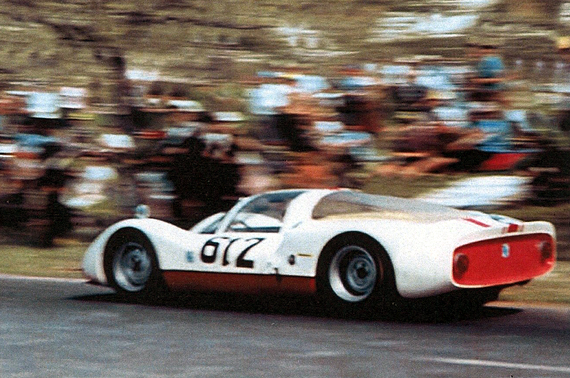
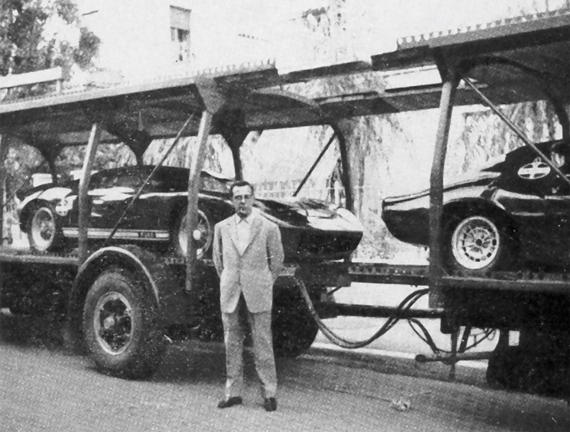
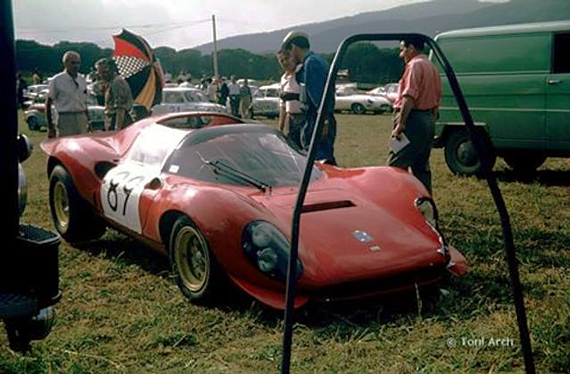
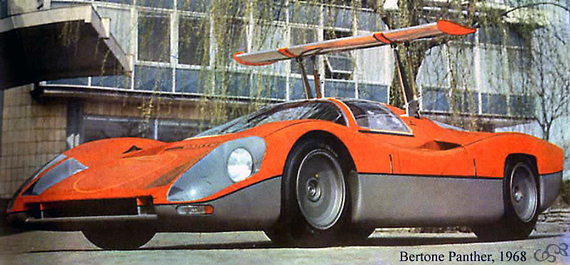
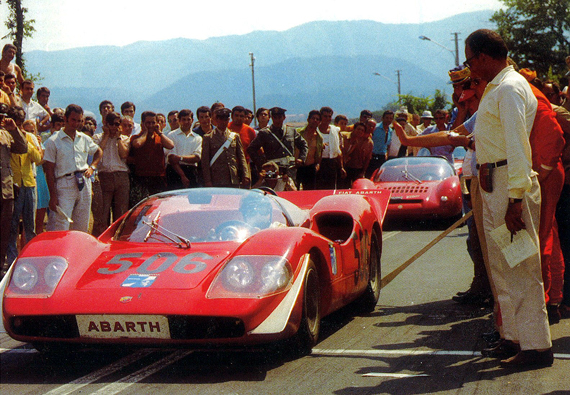
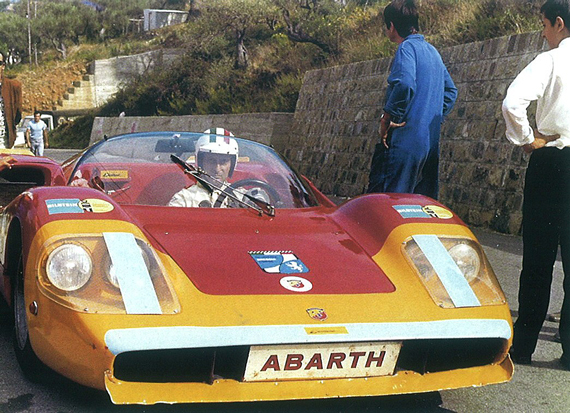
what luvly cars the abarth 2000sp and periscopio were…
A very interesting subject. The content is great. Your writing style is great. Thank you for bringing this to us, Dino.
Dears people with engine passion,
thanks to write about my Scuderia Brescia Corse, where is fantastic coming back in the past reading time where Brescia Corse developed success and 1000 Miglia born as a speed race…. and for driver as me on track is the best remember …
Compliments to reserve and give to everybody a part of our history….
Patrizia Sbardolini
Brescia Corse driver
Interessantissima relazione, molto utile a futura memoria per molti appassionati.
Vivissimi complimenti a voi e soprattutto al dott. Belponer il quale, con il suo entusiasmo e la sua generosità, ha reso possibile la realizzazione di un sogno di molti piloti e di molti sportivi.